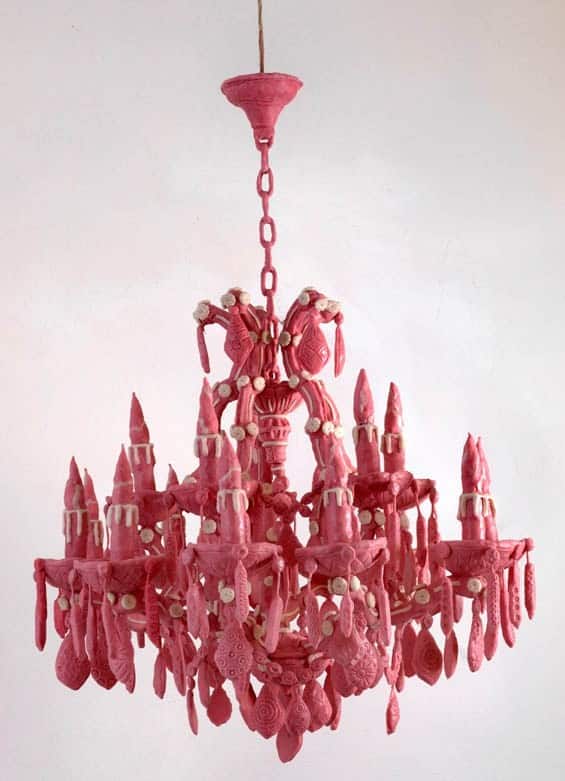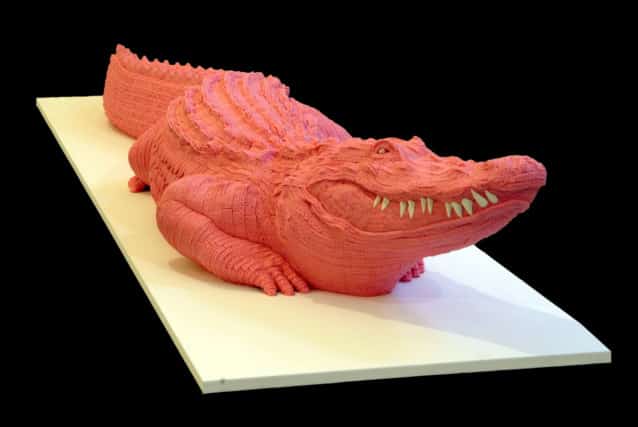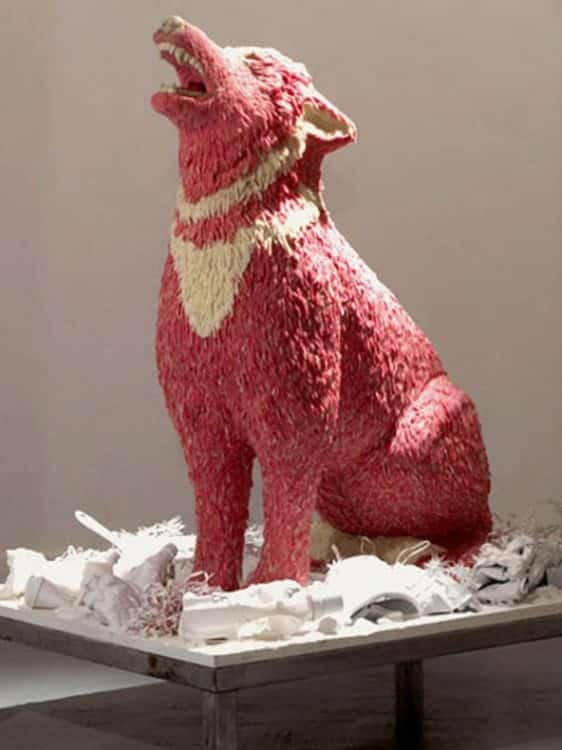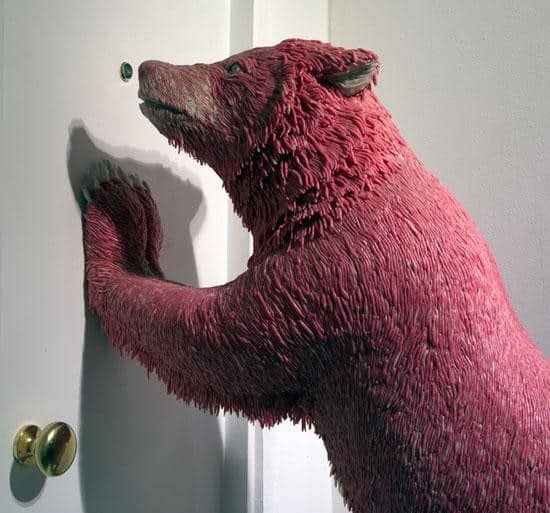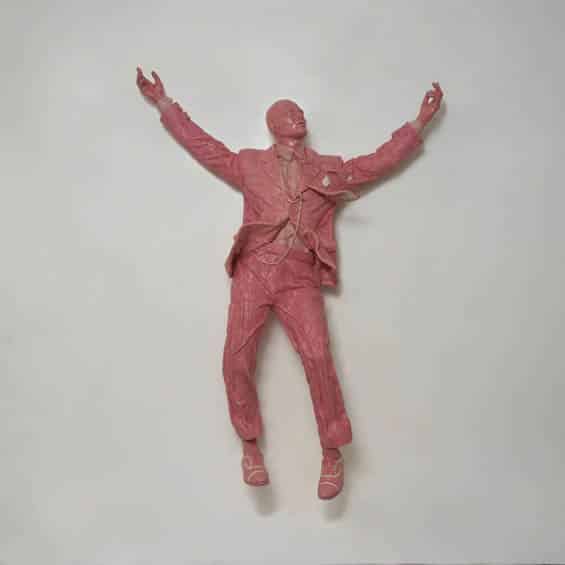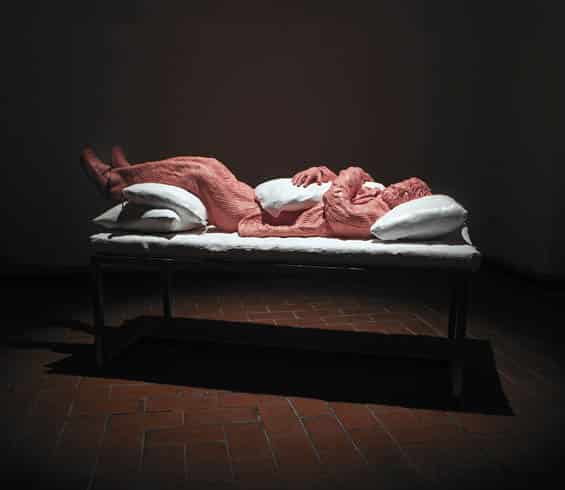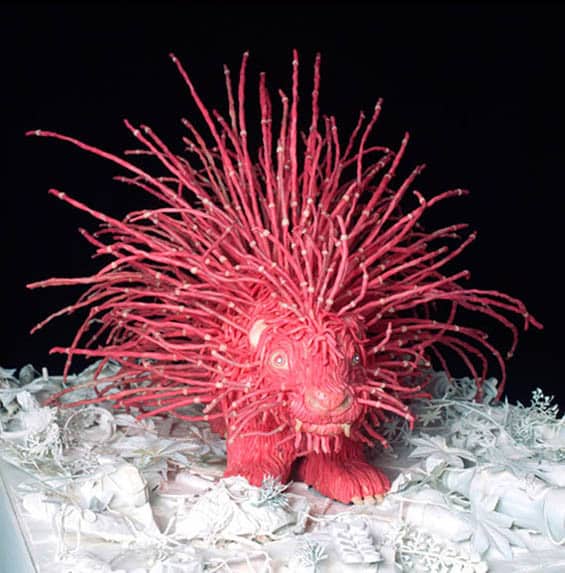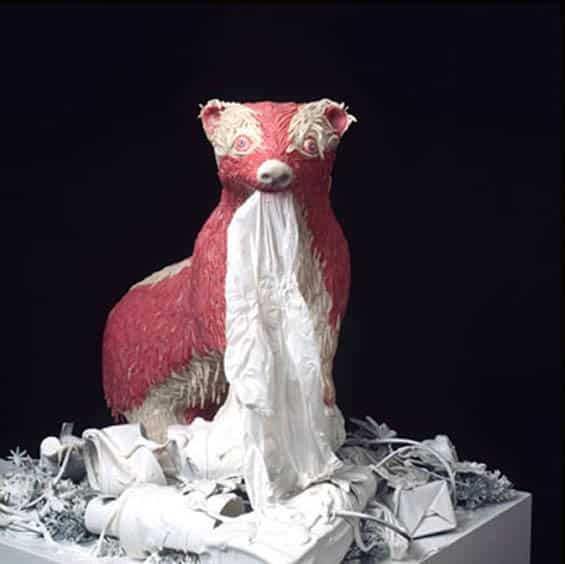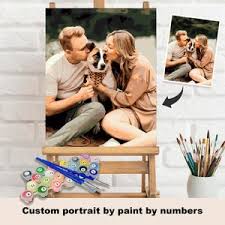Sculptures Made Entirely From Pink and White Chewing Gum!
When there is something that calls to mind the memory of the days, schoolyard politics, as well as summer daytime when sweet was filled with psychological together with gustatory significance, it is bubblegum. Using identifying odor its surreal funny wrappers, and brilliant pink color, it is tied to youth. Or could it be?
With a process as unique as his aesthetic, Maurizio and his two assistants unwrap then apply heat to thousands of half white, half bright pink bubble gum squares without chewing a single piece, so they can easily be manipulated, cut with a knife, and applied to plaster mold like traditional clay. Maurizio notes, “The mold is crucial†– without it, his tacky sculptures would be far too unstable. After molding the chewing gum into his desired shapes, Maurizio fixes and preserves his sculptures with a mixture of formaldehyde and antibiotics, so his works will be in tact for generations of Romans to come. This labor-intensive process at times calls for nearly 3,000 individual pieces of bubble gum per sculpture.
That is what sculptor Maurizio Savini and Italian artist tries to investigate along with his sculptures, which are created having a mean of 3,000 pieces of bubblegum per piece. However do not worry — it is not chewed.
The first exhibition I had went really well, there was only one problem which was actually quite funny. The works I sold completely fell apart after three months as the high sugar content in the bubble gum had destroyed the foundation beneath – they were all sent back to the galleries! I had to give the money back, but I had already spent it!
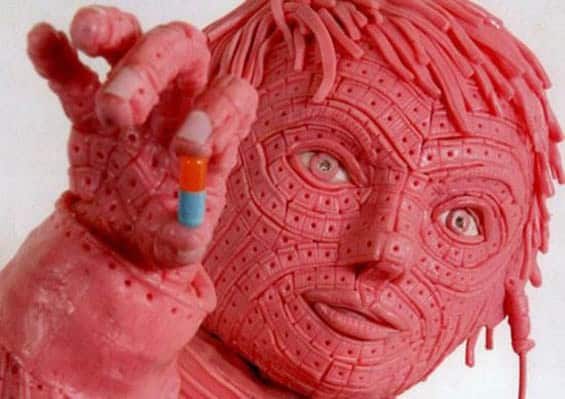
Maurizio Savini, via the Emmanuel Fremin Gallery
Savini and his two helpers gather tens of thousands of bits of bubble gum squares to create these sculptures. Heat is used to produce the chewing gum malleable and capable of being cut easily using a knife once unwrapped. The softened chewing gum is subsequently applied into a plaster mould.
These sculptures aren’t solid chewing gum; they had be exceedingly heavy and shaky, and also would find yourself falling on themselves if they were. After the bit is whole, it is subsequently treated with antibiotics and formaldehyde, maintaining it forever. That is correct — these are inedible.
So why bubblegum, of all materials? Several reasons, actually. For one thing, Savini is fascinated by the bright, slightly sickening pink color. “Pink represents artificiality,” he explains. “When you see it, you associate it with a fake world.” Gum is associated with sugar and candy, and “bubblegum” is used to describe anything sweet, popular, and harmless.
But there’s another side to it. Gum is also the culprit in a lot of pollution, and cities have been known to sink millions of dollars every year into scraping gum off municipal surfaces, only to have it replaced by millions more wads of the sticky, barely biodegradable stuff.
Gum is also severely unhealthy for animals like dogs, and has even been known to cause death in some cases. With that knowledge, Savini’s masses of bright, artificial pink gum become suddenly menacing, speaking of unhealthy habits and continuous consumption.
Combine that with their formaldehyde treatment, and their gleaming pinkness becomes even more unnerving.
Savini’s work is currently being exhibited in his native Italy at the Emmanuel Fremin Gallery, which also houses works by many other artists. Savini’s pieces are coming to the U.S. this summer via the Art Southampton festival on Long Island, New York.
via ViralNova
